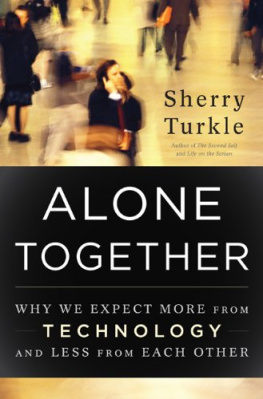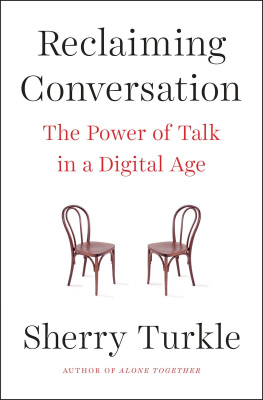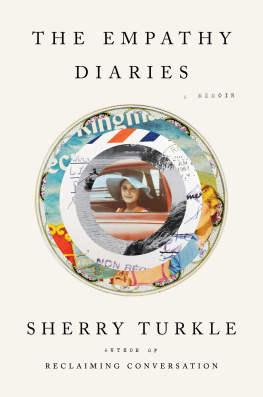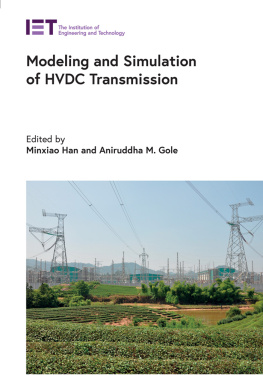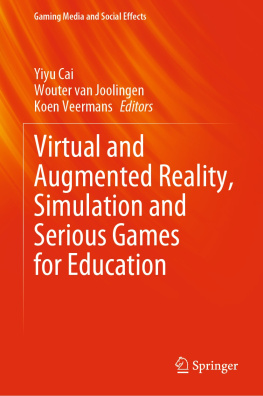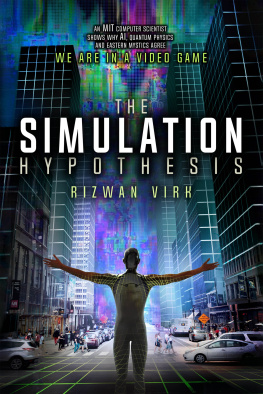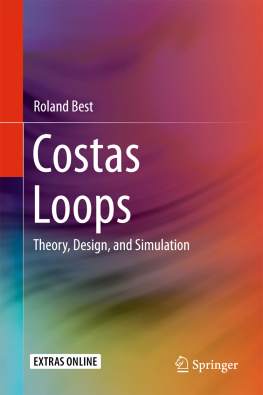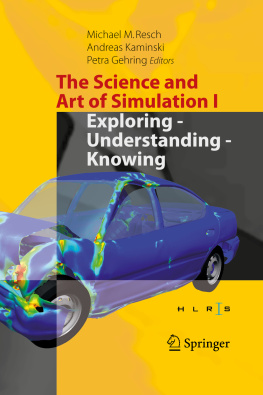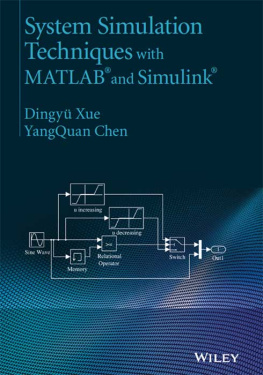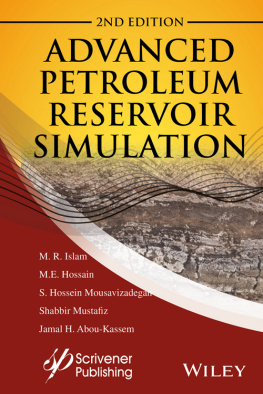SIMULATION AND ITS DISCONTENTS
SIMPLICITY: DESIGN, TECHNOLOGY, BUSINESS, LIFE
John Maeda, Editor
The Laws of Simplicity, John Maeda, 2006
The Plenitude: Creativity, Innovation, and Making Stuff, Rich Gold, 2007
Simulation and Its Discontents, Sherry Turkle, 2009
SIMULATION AND ITS DISCONTENTS
SHERRY TURKLE
With additional essays by
William J. Clancey, Stefan Helmreich, Yanni A. Loukissas,
and Natasha Myers
The MIT Press
Cambridge, Massachusetts
London, England
2009 Massachusetts Institute of Technology
All rights reserved. No part of this book may be reproduced in any form by any electronic or mechanical means (including photocopying, recording, or information storage and retrieval) without permission in writing from the publisher.
For information about special quantity discounts, please email .
This book was set in Scala and Scala Sans by Graphic Composition, Inc., Bogart, Georgia. Printed and bound in the United States of America.
Library of Congress Cataloging- in-Publication Data
Simulation and its discontents / Sherry Turkle ; with additional essays by William J. Clancey [et al.]. ; foreword by John Maeda
p. cm. (Simplicitydesign, technology, business, life)
Includes bibliographical references and index.
ISBN 978-0-262-01270-6 (hbk. : alk. paper)
1. Computer simulation. 2. Visualization. 3. TechnologyHistory. 4. TechnologySocial aspects. I. Turkle, Sherry.
QA76.9.C65T87 2009 003 .3dc22 2008035982
10 9 8 7 6 5 4 3 2 1
To David Riesman and Donald Schn,
Two mentors, two friends
FOREWORD
John Maeda
In the mid-1800s it was rumored that there was gold in them thar hills of California, and hundreds of thousands of settlers ocked to stake out their fortunes. Theres nothing like a plum, virgin opportunity to attract the curious. The world sometimes presents us with new possibilities, and either we jump at the chance... or just stay at home.
The World Wide Web was another kind of gold rush when it first got started. I was one of those people that shrugged unconvincingly when excited friends with a kind of gold fever written across their faces would exhort to me, You have to have a homepage! Ahomepage? I would mockingly question, I already have a home. No, thank you. So I stayed at home at first. But jumped in soon thereafter. Luckily.
Today I spend most of my time working diligently on the Web, and at least once a week I buy some whatever.com domain name as is the preferred personal hobby of the armchair digital magnate. So having jumped on the Web bandwagon just in time to not lose out, I vowed to not be so aloof when the next trend would come around. And then the opportunity presented itselfcalled Second Life.
I bring up Second Life because it embodies Turkles thesis that we are amidst a long- running sea change in the world of virtual worlds that has not yet become manifest as a switchover. Faithful to the gold rush mentality and remembering my doubts in the Web, at the peak of the buzz I bought an island in Second Life for a few thousand dollars. Five months later I gave it to a friend as I had no use for it. Reading the various strands of historical discontent as documented by Turkle, I now know why I let my island go. And I also know that some day I will wish I had it back.
For businesses that wish to understand the importance of understanding the history of doubt that surrounds adoption of simulated realities, just look at the current popularity of Facebook to viscerally feel that something is indeed happening in our world that looks like a mass migration to virtuality. The concepts in this short historical piece by Turkle trace a clear path from the technology in the laboratory to the living virtual landscape in which we thrive today. Knowledge makes things simpler, by the fourth law of simplicity, and for that reason I know the knowledge in this volume will certainly untangle some of the mysteries you felt, as I once did, about the design and technology issues that pertain to the simulations in which we will all live.
PREFACE AND ACKNOWLEDGMENTS
For Susan Sontag, to collect photographs is to collect the world. Simulation takes us further into our representations. We no longer need to keep the world in our minds eye. We build it, step into it, manipulate it. If photography is a new way of seeing, simulation is that and more: a new way of living, both a change of lens and a change of location.
Simulation and Its Discontents draws on two ethnographic studies for which I was principal investigator. The first, sponsored by the MIT provosts o;ce, explored the introduction of intensive computing into educational practice at MIT in the mid- 1980s; the second, a National Science Foundation study twenty years later, investigated simulation and visualization in contemporary science, engineering, and design.
I gratefully acknowledge my colleagues who collaborated on the studies of the mid- 1980s and mid- 2000s. My coprincipal investigator on the study of educational computing at MIT was Donald Schn. From 1983 to 1987 we worked with research assistants Brenda Nielsen (who did fieldwork in the Department of Architecture, Chemistry, and Physics), M. Stella Orsini (who did fieldwork in the Department of Architecture and Chemistry), and Wim Overmeer (who did fieldwork in the Department of Civil Engineering). On the second study, from 2002-2005, I worked with coprincipal investigators Joseph Dumit, Hugh Gusterson, David Mindell, and Susan Silbey. This study was part of the research effort of the MIT Initiative on Technology and Self. Gusterson contributed materials on nuclear weapons design, Mindell on the history of aviation. Mindell supervised Arne Hessenbruch, a research assistant who helped establish an overview of our project. Dumit and Silbey supervised Natasha Myers, a research assistant, in her case study of the life sciences; I worked with research assistant Yanni A. Loukissas on a case study of architecture. The NSF research was integral to Loukissass and Myerss dissertation projects. I am particularly in debt to these two talented scholars who were involved in every aspect of researching and writing the NSF final report.
In addition to field research, the NSF project supported two workshops on simulation and visualization in the professions, one in Fall 2003 and one in Spring 2005. Each brought together scientists, engineers, and designers from a range of disciplines. I thank the informants from the 1980s and the 2000s, those who allowed us to watch them at work, those who shared their thoughts in individual interviews, and those who participated in workshop discussions. In Simulation and Its Discontents all have been given anonymity. Where a name appears, it is a pseudonym. All of the case study material follows this policy as well.
My work on simulation and contemporary professional life has also been supported by the MIT Program in Science, Technology, and Society; the Mitchell Kapor Foundation; the Intel Corporation; and the Kurzweil Foundation through their support of the MIT Initiative on Technology and Self. This volume owes a debt to the collegial life of the Initiative, to the MIT Program in Science, Technology, and Society, and to the MIT Media Laboratory. I gratefully acknowledge the contributions of Anita Say Chan, Jennifer Ferng, William D. Friedberg, William J. Mitchell, William Porter, Rachel Prentice, and Susan Yee. Ferng worked as a research assistant on developing the history of simulation in architectural practice; Prentice documented the first MIT workshop of simulation and visualization in Fall 2003; Friedberg provided an insightful critical reading; Chan, Mitchell, Porter, and Yee helped me to think through the tension between doing and doubting that became central to my thinking.


